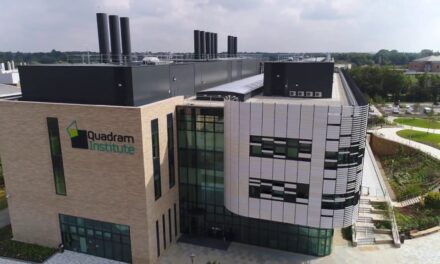In the UK we face a major malnutrition problem. The Food and Nutrition – NBRI team have recently joined a project to tackle micronutrient deficiencies (a form of malnutrition) called Zero Hidden Hunger EU. Here they explain what malnutrition is and how their research will look to prevent iron and zinc deficiencies in the UK.
What is malnutrition?
The term malnutrition can refer to undernutrition, where we don’t get enough energy or nutrients, or overnutrition. Overnutrition is the excess consumption of food that impacts health negatively, such as eating too much fat or sugar leading to obesity.
In the UK, overnutrition is a problem. More than 60% of adults are overweight or obese, and one in seven children are living with obesity. Poor diet and sedentary lifestyles are large contributors to these statistics. The NHS provides guidelines about how to achieve a healthy and balanced diet. Recommendations include to eat at least five portions of a variety of fruit and vegetables a day and to eat foods high in fat, salt and sugar less often.
Hidden Hunger in the UK
Although on average, we are consuming enough calories, or more than we need, many of us are not getting enough of the vitamins and minerals we need to stay healthy, as we don’t eat enough nutrient dense foods, such as fruit, vegetables and wholegrains.
As a result of malnutrition, we see a lot of micronutrient deficiencies, known as “hidden hunger”, in the UK. Not eating enough nutrients can impact our health and wellbeing, with some population groups (including children, older adults and pregnant women) at higher risk than others for certain deficiencies.
In addition, more and more people are switching to plant-based diets for environmental and ethical reasons. As animal foods are an important source of some nutrients, including iron and zinc, we need to be careful that we do not risk further nutrient deficiencies. As part of the Zero Hidden Hunger EU project, in the F&N NBRI team we are looking at iron and zinc bioavailability from sustainable diets. We are finding out how much of the iron and zinc we consume from plant-based foods can be absorbed by our bodies to carry out important functions in the body.
Iron
Iron is important for healthy growth and development. It is also important for making haemoglobin, which is a protein in red blood cells which transports oxygen around the body.
The amount of iron you need varies from person to person. Adult males typically need 8.4mg/day while adult females on average need 14.8mg/day to compensate for monthly iron loss through blood. Children and those who menstruate are at risk for iron deficiency.
Iron can be present in food as haem or non-haem iron. Haem iron, from animal foods only, is the most bioavailable form of iron. Non-haem iron within plant and animal foods is not as bioavailable and absorption can be affected by bioactive compounds present in foods such as polyphenols and phytates.
Zinc
Zinc is another nutrient that is key for healthy growth and development, especially during childhood and adolescence. Zinc also supports a healthy immune system. and male fertility.
Like iron, the amount of zinc we need does vary from person to person. An adult male typically requires 9.5mg/day of zinc, while an adult female on average needs 7mg/day. Children, teenage girls and women over 75 years are often zinc deficient in the UK.
Zinc is found in a wide variety of foods. Animal foods including fish and meat and plant foods such as legumes, nuts and seeds are all good sources of zinc. Like iron, however zinc bioavailability is dependent on compounds ingested alongside zinc.
Bioactives and the bioavailability of iron and zinc
As part of the Zero Hidden Hunger EU project, we will look to understand the extent of hidden hunger in geographical Europe with a special focus on iron and zinc. Our work will offer food-based strategies to ensure adequate nutrition can be achieved from sustainable food sources. Within this project we are hoping to find out what combination of foods at mealtimes enhance iron and zinc bioavailability.
To achieve this goal, we are using data from national dietary surveys in the UK and across Europe. This will help us understand current food patterns and intake in different populations. Data on bioactive compounds present in food is less widely available. At the F&N NBRI, however, we are continuously updating our database FoodBioactivesDB in partnership with EuroFIR’s eBASIS, which helps us measure how many and what bioactive compounds are present in the foods we eat.
FoodBioactivesDB is a publicly available and collects data from previous research into polyphenols and phytates. We use these data to measure the amounts of bioavailable iron and zinc in our diets and consider how we can improve absorption of iron and zinc based on what foods are eaten together.
It is important that we understand how foods, and combination of foods in meals, impact iron and zinc bioavailability. Our work in the F&N NBRI team is key to helping understand more about malnutrition and hidden hunger in the UK and Europe so we can accurately measure iron and zinc status and how we can improve iron and zinc bioavailability through our diets.












